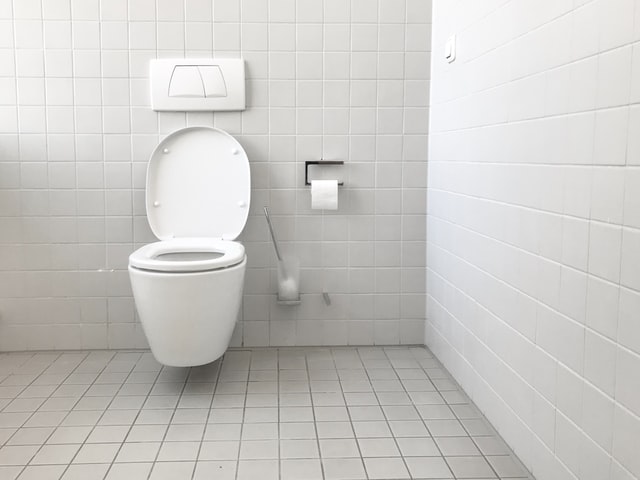When traveling, not knowing the local rules and customs can lead to embarrassment in many ways. Bathroom etiquette, in particular, confuses many tourists. The bathroom norms vary between countries, and you need to learn these before you land in a foreign country. This article will provide you with explanations of the different bathroom rules around the world.

Toilet Paper
Every foreign country has its own rules when it comes to toilet paper and its usage. The rules differ from one country to another. Here is how.
Bring Your Own Toilet Paper
Even in places where people use toilet paper, it is customary to bring your own whenever you want to use the bathroom. Some places may provide that, but you don’t want to run the risk. Even in other countries, it is usually recommended that you bring your own pocket-sized toilet paper to avoid any surprises. For all you know, the user before you might have used it all up.
Pay for the Toilet Paper
In countries such as Taiwan, it is not unusual to pay for the toilet paper itself. This doesn’t mean that you have to pay for using the bathroom per se; that varies depending on the place. This can be traced to a shortage in toilet paper and a huge increase in toilet paper prices in the past few years. This means that it might be a good idea to go in with some change in your pocket.
Bathroom Fees
Even though public restrooms are mostly free around the world, you should expect to pay a small fee in many European countries for using the facilities. England, France, Sweden, Germany, and the Netherlands are some countries where you need to pay a small fee for using the bathroom.
Even when paying is not required, it’s not unusual to find an attendant who expects you to give them a little tip. You’ll usually find a jar full of coins. Whenever you enter a public restroom in Europe, it’s important that you have a few coins. You don’t need to pay too much; €0.5 or €1 should be fine.
Hygienic Rules
Views on hygiene in relation to bathrooms can be drastically different depending on which country you are in. Some toilet rules may appear odd to those unfamiliar with them. Some countries are more demanding when it comes to hygiene.
Whenever you’re in a foreign country, it’s important to familiarize yourself with this; nobody likes a change in their hygienic routines.
Slippers
Japan is perhaps the country with the most ritualistic cleanliness norms. Cleanliness is taken very seriously in all places, particularly in bathrooms.
The Japanese have special slippers intended for bathroom use, whether at home or in public places. So, be ready to leave your shoes outside the door and wear those upon entering. It goes without saying that you need to leave those slippers inside.
It is absolutely frowned upon to walk inside and outside the bathroom with the same shoes. You know what they say, what happens in the bathroom stays in the bathroom.
Bidets
Originating in France around the 1600s, the bidet is a toilet-like facility that is intended for washing after bathroom use. It is popular in many European countries but can be found in other countries in Asia, Africa, and Latin America. Bidets are appreciated as a good alternative to toilet paper, they are, according to Fast Partitions, much more hygienic and environment-friendly than toilet paper. They can also prevent sewage clogging. So, don’t hesitate to use them whenever you find them.
Hygiene Products
Not all bathrooms include hygiene products that you may be familiar with. Whether it be toilet paper, soap, sanitizer, disinfectant gel, pads, or tampons, it is a good idea to come prepared with those. Some of these products are hard to come by depending on the country you’re visiting. In other cases, the products you find there may not match up to your standards.
Familiarize Yourself with Squatting
If you’re traveling abroad, you may find yourself in a country where the bathroom facilities are nothing like the ones you’ve seen before. If you’re used to the toilet seat, you may want to be ready to do some squatting to go number two.
Many people argue that this is a rather healthier position that relieves the body from unnecessary pressure and makes things go smoother and quicker. It is recommended that you practice this beforehand because chances are, you might not have a choice.
Flushing Rules
Flushing norms are different around the world. While in most countries, you are required to flush after going, others expect you not to flush. Be familiar with the flushing etiquette before visiting another country.
Some countries often use dry or non-flush toilets that don’t give you the option to flush. Others use these types, as well as low-flush systems, to save water.
An important aspect of flushing is whether or not you should flush your toilet paper. Many countries around the world don’t have advanced sewage systems, so flushing paper may clog the toilet; which is a very unpleasant sight. Never flush tissue or paper in countries where you’re not supposed to. To make up for that, such countries put dustbins in order for you to dispose of your used toilet paper.
Company
As Steve Tailor in the British comedy TV show Coupling put it, the toilet is the final refuge, the last bastion, the last few square feet of private space left for humans. Well, this may not be true everywhere. In many public restrooms around the world, be ready for some company.
If you are, just like Steve, very particular about your bathroom privacy, you may want to hold it in until you go back home or find a place in the middle of nowhere to go.

Public restrooms are not used the same everywhere in the world. No one wants their bathroom experiences to be unpleasant or traumatic. Some rules are naturally easier to put up with than others. In any case, familiarizing oneself with the different bathroom etiquette around the world is crucial in every travel plan.





